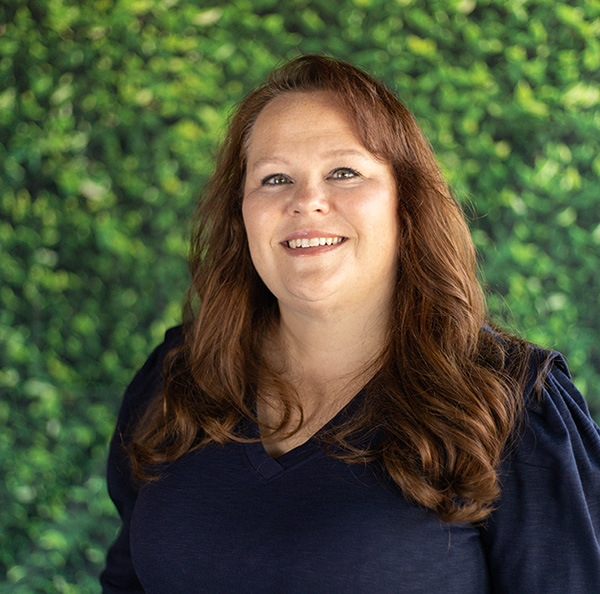This is not another blog on how to use assessments to drive instruction. Rather, it is about how students can see their progress and get on a winning streak. Rick Stiggins once shared that, “Our job is to get every kid on a winning streak and keep them there.” So how do we do that? Are our students on winning streaks? Do they know if they are? What can we do to encourage progress in our classrooms?
The shift is not to write more assessments; rather, it is to clearly define what the expectations are and what success looks like in order for students to see and celebrate progress on a regular basis. Why does progress matter so much? Progress over time builds efficacy. The more mastery moments we have, the more our confidence and our toolbox of strategies to take on additional learning grows (Bloomberg, et al., 2022, pp. 241-248). What is a mastery moment; you might wonder?
“…knowing for a moment or in the moment that a small victory was won, an aha moment or occurred, a synapse of brilliance exploded in the brain.”
What then can we do to acknowledge and celebrate such moments for and with students? Students need multiple opportunities to make their learning visible to see and share their learning. Such experiences are called Opportunities to Respond, and may include any strategies, activities, or tasks that make student thinking visible and allow both the teacher and learner to observe learning progress (Almarode & Vandas, 2018, p. 107).
So, how do we make that happen in the classroom?
Time
How can we carve out time to reflect on learning?
As teachers, we feel so pressed for time, and it’s hard to give time for reflection and celebrations of learning when we feel we can hardly keep up. That said, it’s essential for a great variety of powerful practices to take root and have an impact on student learning and self-efficacy. Such practices as setting personalized goals related to expectations, making plans for one’s learning, applying strategies, reflecting on learning, and providing feedback to others are possible if meaningful reflection is alive and well. Therefore, if we want those things for students, we are compelled to shift how we value time spent in the classroom. I remember being instructed to teach bell-to-bell, as many others have, but in doing so, there is no time for progress or any of the practices that allow students to take greater ownership of learning. In fact, in such classrooms, teachers are doing the heavy lifting of learning while students watch and observe them work.
Essentially, the shift toward reflection and honoring progress, transforms our way of being as teachers from, “I taught it so they should have learned it,” to “Did they learn it?” Professor John Hattie describes this shift as one of the MIndframes (Hattie & Zierer, 2017) that educators hold that have the greatest impact on student learning. Once we have refocused our attention on whether or not students learned something, reflection and discussions of progress become essential, pivotal, and meaningful.
You might be wondering just how we get that shift to happen. Perhaps thinking of when it might be helpful for students to reflect on learning can offer a window into what reflection can look like.
Times Reflection May Impact Learning:
Before New Learning:
- Reflect on prior knowledge and share previous learning.
- After the new learning goal has been shared, and students have engaged in co-construction of success criteria for the unit/chunk of learning, they can reflect on how far or close they feel they are to reaching the goal.
During Learning:
- Success Criteria offer a way for students to reflect on their progress on a regular basis, daily, every day or two, weekly, etc. Students can determine which they believe they have accomplished and what evidence they have to show or prove they have “got it.”
- Students can be shown or find common errors and reflect on whether or not they too are making the error.
- Students can compare their current work to exemplars to determine how they are progressing and what they may wish to do next.
- Students can discuss their current state of learning or share their current work with another student who has “got it” to ask for feedback and discuss possible next steps.
- Teachers can share anonymous student work samples with learners and ask them to critique the work to discuss what is done well and what needs improvement. Then students can reflect on their own work and potential improvements.
- Students can mark their progress on a visual tool that the entire class uses or a personalized progress tool.
After Learning:
- Students can match up work they did early in their learning to show how their work has transformed over time.
- Students can offer pieces of work they feel are their “best” so far to prove their learning according to the Success Criteria.
- Students can showcase or share their “best” work for others to notice the change over time.
Truly, the list above is just a small representation of what is possible for reflection, but it also provides some ideas to determine what you may already be doing and what might be a next step as well. What seems most doable and meaningful to you? How do you think students knowing their progress might change things in your classroom?
Tools
What student-friendly tools would help students make learning and progress visible?
What do I mean by tools? We will explore two types of tools: 1) Those that make learning and thinking visible and 2) those that make progress visible.
One way is to think of ways students can daily make their thinking and learning visible, such tools are often referred to as Opportunities to Respond and may include a wide variety of options from discussion, exit tickets, sharing one’s thinking aloud, modeling for others, making connections, and more. What do you notice about the following example?
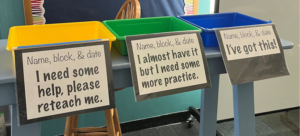
Bins to turn in Exit Tickets or classwork that encourage students to identify where they are currently in the learning process and offer the opportunity to show progress over time.
The more students can show what they are thinking and learning, the greater understanding they have of their own learning and the larger the window is that we, as educators, have to peer through to make instructional decisions.
In addition, when students can mark their progress, even the smallest gain, they get a boost in efficacy; it feels good. So, why not have them feeling good as often as possible? What follows are a few examples to check out. What do they make you think about for your classroom or school?
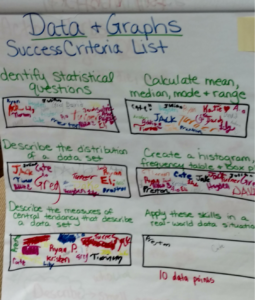
Students sign off on each Success Criteria when they have proven they can do each one.
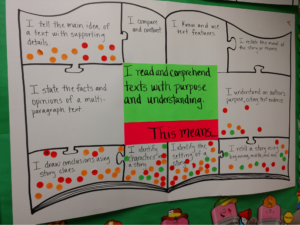
Students assessing their progress toward the Learning Intention (in green) focusing on comprehension. Different colored dots signify where in the process of learning students feel they are:
-
Green = I got it!
-
Orange = I am on the way but still working on it.
-
Red = I am new at this or am struggling.
Team Culture
How can we shift from achievement and comparison to a team approach to learning among students?
Learning is social—it just is. So, whether we like it or not, students impact one another’s experience on a moment-by-moment basis. How then can we guide them to be supportive partners in learning? How can they positively contribute to the learning of others?
For the purpose of the blog, we will keep this short and focused, using the word TEAM as an acronym.
T – Teach students that learning is a process, and the brain is malleable. Learning isn’t about being smart but rather it’s about effort and progress.
E – Empower learners to support one another as learners. Students need to know what is acceptable to you when helping other students, as expectations often vary classroom to classroom.
A – Affirm team supportive behaviors when you see them. Share what you saw, why it matters, and ask students to share what helped them that their partner did.
M – Model how and what good learning partners do and do not do in order. Develop a list of what good learning partners do with the class, writing down what they care about and what works for them.
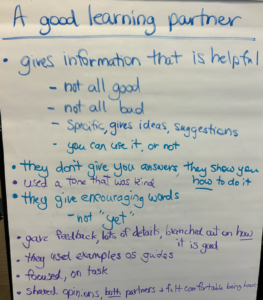
Wrapping Up:
While this was not a blog about using assessments to drive instruction, when students get on winning streaks, their progress and willingness to reflect will inform and transform our next steps in teaching and learning. Get ready because winning streaks are a wonderful and wild ride!” to “When students get on winning streaks, their progress and willingness to reflect will inform and transform our next steps in teaching and learning. Get ready because winning streaks are a wonderful and inspiring experience!


